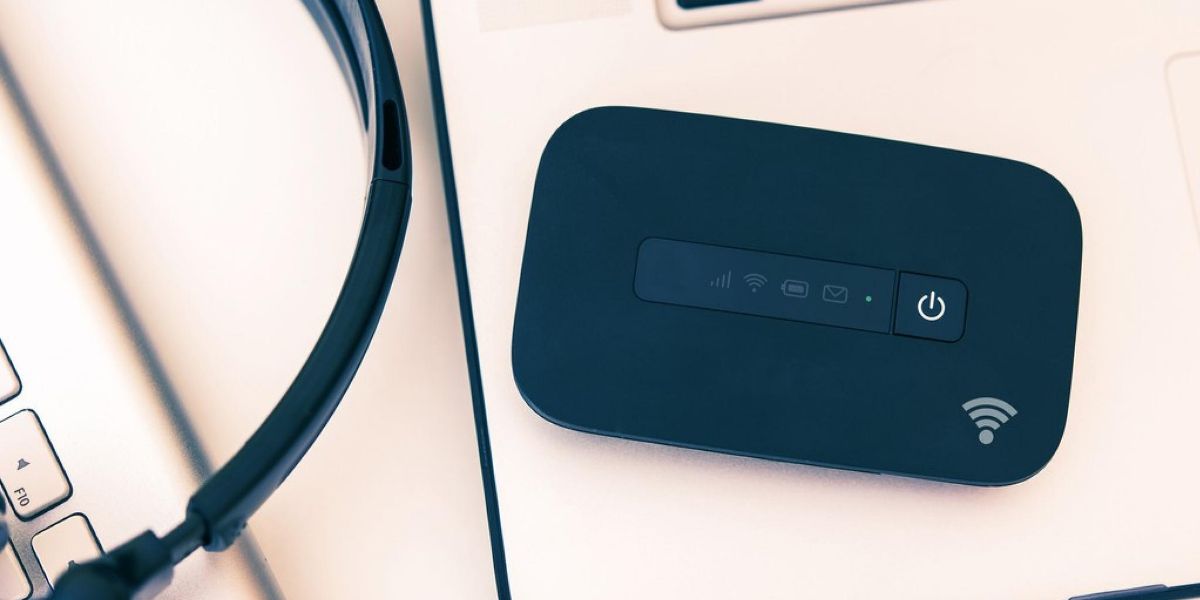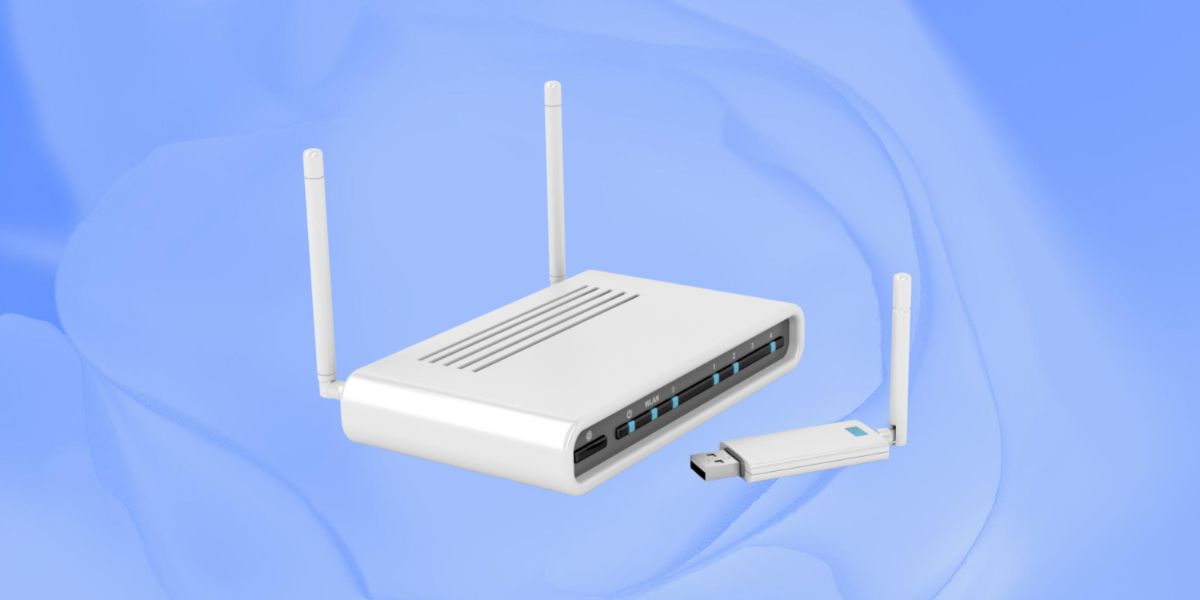Key Takeaways
- Utilize your smartphone's hotspot to easily and affordably get Wi-Fi in your car, connecting multiple devices without the need for additional data purchases.
- Consider getting a dedicated mobile Wi-Fi hotspot device for uninterrupted connectivity and the ability to make phone calls without affecting the internet connection.
- For a more permanent solution, use a vehicle Wi-Fi accessory like an OBD-II device or install a wireless modem and router with 4G LTE for reliable Wi-Fi in your car, although these options can be more expensive and less portable.
There is no need to feel disheartened if your old car does not come with a Wi-Fi facility. Thanks to technological innovations, you now have more Wi-Fi options in your vehicle than ever before.
Over time, the techniques have also become cost-effective and offer more convenience to the users. So, it's time to check out how to get a Wi-Fi connection in your car.
1. Smartphone Hotspot
It's hard to imagine a car owner without a smartphone. The easiest and cheapest way to get Wi-Fi in an old car is to utilize your phone's hotspot.
Turning your smartphone into a hotspot lets you connect tablets, MP3 players, and other Wi-Fi-enabled devices to this ad hoc network. Here, the idea is to make your smartphone function like a modem and router simultaneously.
Depending on the phone model, you can turn on the hotspot option from the phone settings or use a suitable app. In most phones, you will find the hotspot option in the Quick Settings menu, which you can access by swiping down on your screen.
The biggest advantage of using this method is its extreme simplicity. You can turn it on in a few taps. It also does not require you to make additional data purchases.
The drawback of the smartphone hotspot is that it contributes to phone battery drain and data plan consumption. Your phone might also get hot when connected to multiple devices. Also, this won't be suitable while you're traveling abroad. Furthermore, the number of devices you can connect to your smartphone hotspot depends on the device you're using and your data throughput.
You should note that some car-specific services will not function with a smartphone hotspot.
2. Mobile Wi-Fi Hotspot
If you want an uninterrupted Wi-Fi connection but need to receive frequent calls from your family or colleagues, it's better to drop the idea of using the smartphone hotspot. Phone calls you make using the cellular network will hamper the internet connection.
Instead, you can adopt the idea of getting a dedicated hotspot device (one of the different types of mobile hotspots), also known as mobile broadband. It'll allow you non-stop internet connectivity anywhere within your cell network coverage.
These devices essentially have the facility to include cellular data connections as phones. It creates a wireless network to which you can connect your devices. However, don't expect the device to do other things that you can do using a smartphone.
Mobile Wi-Fi hotspots support different data plans; you can even use them outside your car, like in a shopping mall or at the beach. They get their power from a USB connection and do not rely on a battery.
Fortunately, they are easy to set up and come with additional security. Moreover, you won't face any performance issues if you connect multiple devices. The disadvantage of this option is it requires you to get a separate data plan. You'll also need to set this up on a PC for the first time. Thus, if you are often on the go and need the internet at all times, getting your hands on any one of the best portable mobile hotspots can be beneficial.
3. OBD-II Device
If you're looking for a more permanent solution, vehicle Wi-Fi accessories like Onboard Diagnostic port (OBD-II) are the right choice. However, the OBD-II-based solution will require a 4G LTE SIM and data plan from a mobile career. Some OBD-II Wi-Fi Internet solutions require more than one device.
For example, the Verizon Hum car Wi-Fi solution has an OBD Reader, the Hum Speaker, and a dedicated mobile app for operations control.
The Wi-Fi device will work till there is a power supply to the OBD-II port. Hence, if you stop the car engine, Wi-Fi won't work. Installing this device is easy since you need to plug it into the vehicle's OBD-II port.
It's the same connector technicians use for computer diagnosis. Cars in the US have had this port since 1996. If you're wondering about its location, check the left part of your steering column below the car dashboard. If it's not there, you may find it under a protective cover or behind a latch. You may, however, always visit a local car technician for the installation.
The benefits of this device are cellular data access to multiple devices, a local Wi-Fi network, tracking real-time vehicle location, car location history, and fetching engine control unit (ECU) or power control module (PCM) data.
4. Install a Wireless Modem and Router With 4G LTE
By installing a wireless modem and router permanently, you can offer your car the most reliable method to get Wi-Fi. Unfortunately, it's also the most expensive and the least portable choice for getting Wi-Fi in your old car compared to the other approaches.
You can easily install and uninstall this device. It also offers a stronger and better network than the dongle and mobile. You can also use Ethernet ports and USB sockets that this device offers.
The biggest perk of installing it is that you can connect all your devices, including laptops, smartphones, tablets, and MP3 players, to its network. If you want to go down this route, then you have the option to reuse any old router (if you have one) as well.
5. Car Wi-Fi Plans from Various Brands
You can also get special bundles and devices for your car Wi-Fi. Many car security and network service providers offer these specialized plans for your vehicle.
T-Mobile SyncUP DRIVE
While making your car a smarter one, this device will also transform your car into a Wi-Fi hotspot with 3G, 4G, and 4G LTE support. It supports connection to up to five Wi-Fi-supported devices. At the time of writing, the new connection cost is $96, excluding the data plan.
This service is available to various car brands, so you should check for compatibility before opting for it.
Toyota Wi-Fi Connect
This particular service is only available to Toyota car users. Whether you're an AT&T wireless customer or not, you can enjoy this service at the starting cost of $25. It supports up to five Wi-Fi-connected devices in a car.
OnStar
Besides vehicle safety services, OnStar also lets your car stay connected to the internet with Wi-Fi technology. It supports General Motors, Buick, Chevrolet, and Cadillac.
It offers connectivity services ranging from $24.99 to $49.99. You can also subscribe to its multiple standalone plans to create your combination.
Connect to Wi-Fi for Free
Each of the above methods brings Wi-Fi to your old car. However, all these will cost some money one way or another. If you want to use Wi-Fi in the car for free, you should pull up the vehicle to an area that provides a free public hotspot.
Some common public Wi-Fi areas are schools, public libraries, government offices, and restaurants. You might experience great download or upload speeds using such Wi-Fi, but remember that you're getting it for free. Besides, you can get free Wi-Fi from your home internet provider using its public hotspot.



